In the sun-kissed orchards of Spain, the art of citrus farming thrives, weaving a tale of cultivation costs, profits, and production across diverse landscapes. As the Mediterranean breeze dances through the leaves, farmers embark on a journey to nurture vibrant orchards that yield the zesty treasures of oranges, lemons, and limes. Join us in unraveling the citrus saga, where economic intricacies meet the bounty of nature, shaping the citrus industry’s vibrant tapestry in Spain.
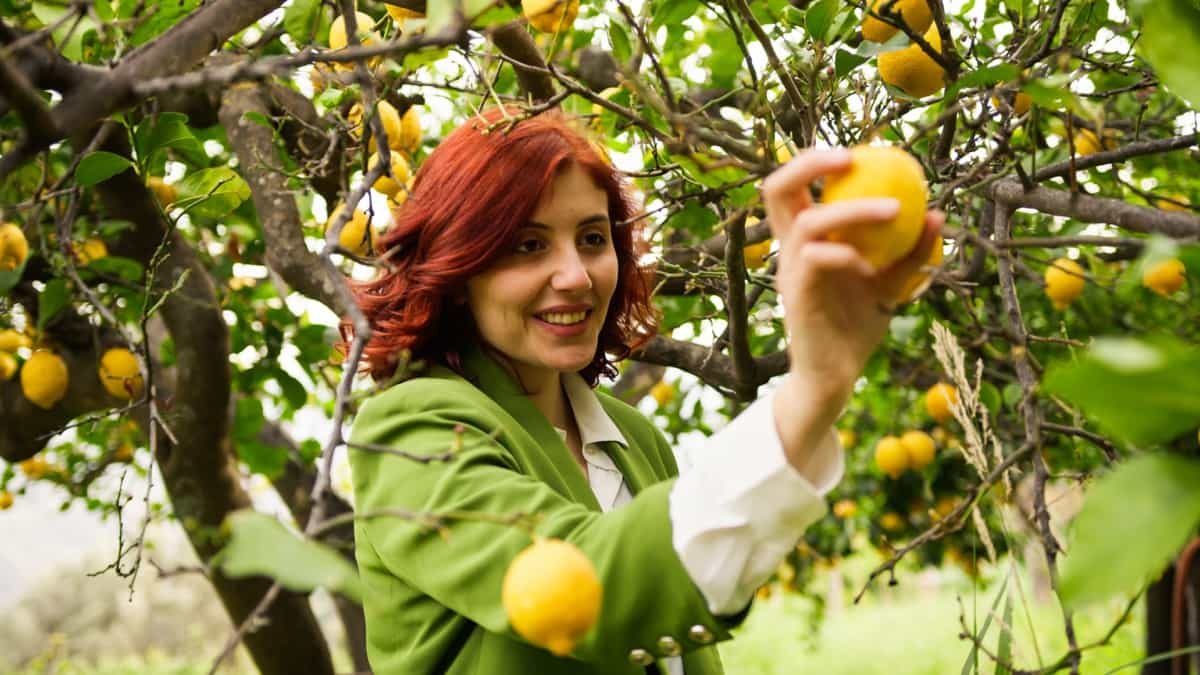
Citrus Farming in Spain
Spain is major citrus producer in the European Union (EU), with approximately 300,000 acres that yield about 21 million boxes. Production is primarily focused on the fresh market, with much fruit exported to various EU countries as well as to North America. Spain produces an excellent mix of fresh varieties from September to June. The main commercial varieties grown are oranges, which comprise about 62 percent of production.
Oranges consist mainly of early (Navelina), mid-season (Lane Late, Navelate, and Salustiana), and late (Valencia) varieties. Mandarins, including satsumas, clementines, and various others, account for 22 percent of Spain’s citrus production. Lemons and limes represent 11 percent of production, and grapefruit and pomelo account for 5 percent.
Citrus Fruit Varieties Commonly Grown in Spain
- Oranges: Valencia, Navelina, Lane Late, Navelate, Salustiana, and Navelina
- “Mandarins” include Satsuma, Clementine, Ortanique, Tango, and Nadorcott.
- “Lemons” include Fino and Verna.
- “Limes” include Tahiti.
- “Grapefruit” includes Star Ruby and Marsh.
- “Pomelo” includes Oroblanco.
Climate and Soil Requirements for Citrus Cultivation in Spain
Citrus cultivation in Spain requires a Mediterranean climate with hot, dry summers and relatively cold winters. Rainfall averages from 16 to 24 inches per year, with some locations receiving less than 10 inches per year. Citrus trees are sensitive to frost and need protection from low temperatures during the winter months. Citrus trees also need adequate irrigation during the dry season to prevent water stress and maintain fruit quality.
The soil requirements for citrus cultivation in Spain vary depending on the rootstock and the scion variety. Generally, citrus trees prefer well-drained, fertile, sandy loam soils with a pH between 6-7. Citrus trees also benefit from organic matter and mulching to improve soil structure and water retention.
In case you missed it: How to Start Greenhouse Farming in Spain: Crops, 1 Acre Greenhouse Cost, Subsidy, and Loans
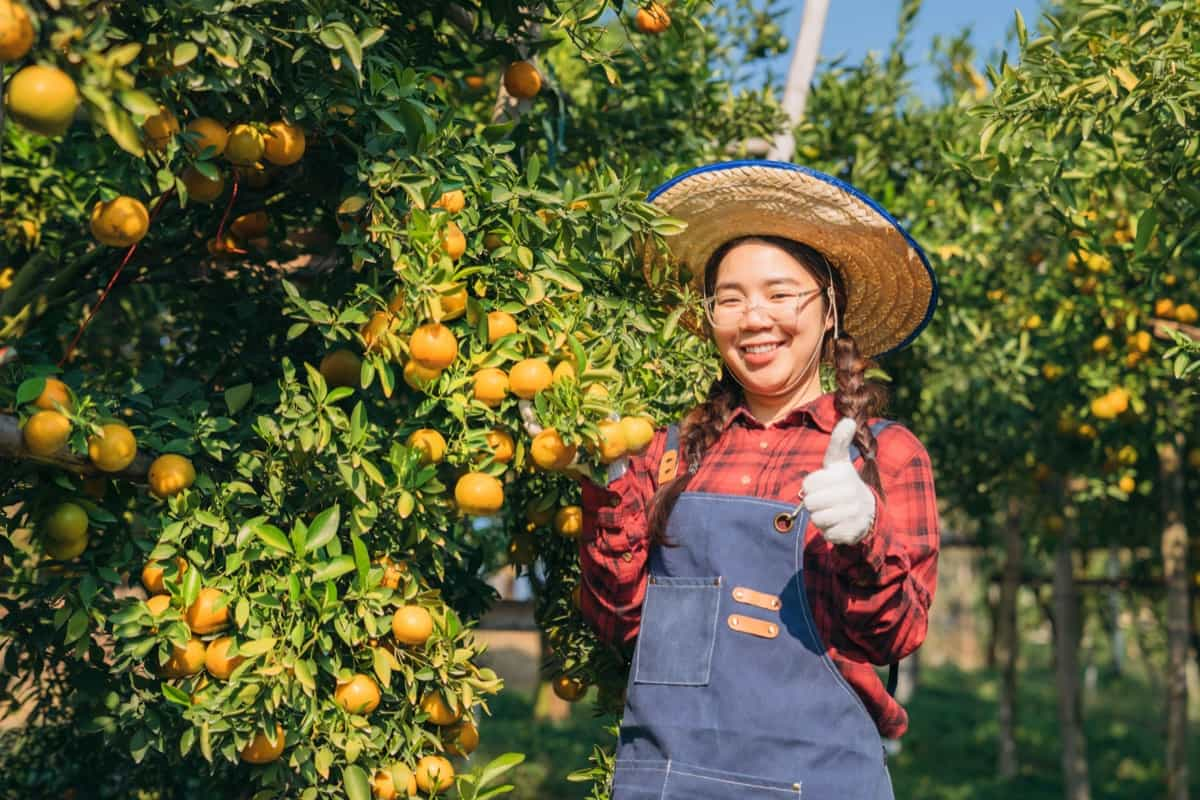
Citrus Orchard Management Practices in Spain
Planting: Citrus trees are usually planted in rows with a spacing of 10 to 15 feet between trees, 20 to 25 feet between rows. The planting density depends on the rootstock, the scion variety, the soil type, and the irrigation system. Citrus trees are usually grafted on dwarf or semi-dwarf rootstocks to reduce tree size and facilitate harvesting.
Pruning: Citrus trees are pruned annually or biennially to remove dead, diseased, or damaged branches, to shape the canopy, to improve light penetration and air circulation, and to stimulate new growth and fruiting. Pruning is done during the dormant season or after harvest to avoid sunburn and pest infestation.
Fertilization: Citrus trees require regular fertilization to maintain soil fertility and plant nutrition. The amount and type of fertilizer depend on the soil analysis, the leaf analysis, the tree age, and the yield potential. Citrus trees need nitrogen, phosphorus, potassium, calcium, magnesium, sulfur, and micronutrients like iron, zinc, manganese, copper, and boron. Fertilizers are applied through the irrigation system or as granular or foliar applications.
Irrigation: Citrus trees need adequate irrigation during the dry season to prevent water stress and maintain fruit quality. The irrigation frequency and amount depend on the soil type, the tree age, the weather conditions, and the evapotranspiration rate. Irrigation systems include drip, micro-sprinkler, or sprinkler systems.
Harvesting: Citrus fruits are harvested manually or mechanically when they reach the optimal maturity stage for fresh consumption or processing. Harvesting is done carefully to avoid damaging the fruit or injuring the tree.
Pest and Disease Control Measures in Spainian Citrus Farms
Spanish citrus farms face numerous pests and diseases that can impact their production quality and quantity. Common pests include aphids, scale insects, mites, whiteflies, leafminers, thrips, mealybugs, and fruit flies. In contrast, common diseases include citrus tristeza virus (CTV), citrus greening (HLB), citrus canker, citrus black spot, and post-harvest rots. To control these issues, farmers use various measures, cultural practices, biological control, and chemical control.
Cultural practices involve selecting resistant varieties, using certified nursery plants, removing infected or infested plants or fruits, pruning, fertilizing, irrigating, mulching, and intercropping with other plants to repel pests. Biological control uses natural enemies like predators, parasitoids, or pathogens to reduce pest populations. Chemical control uses pesticides like insecticides, fungicides, or bactericides to kill or inhibit pests or diseases.
However, chemical control should only be used as a last resort when other measures are ineffective or feasible. Chemical control should follow integrated pest management principles, including selective and low-toxicity pesticides, appropriate application time and dose, rotation to avoid resistance, and monitoring their effects on pests, diseases, beneficial organisms, and the environment.
Citrus Harvesting and Post-Harvest Handling Techniques in Spain
Citrus harvesting in Spain is primarily done by hand using clippers or knives, with mechanical harvesting being less common due to high costs, labor risks, and low consumer acceptance. Harvesting occurs when the fruit reaches its optimal maturity level, which depends on the variety, market destination, and consumer preference. Harvesting typically occurs from September to June for different types of citrus.
In case you missed it: Citrus Cultivation in Africa: Citrus Fruit Farming Cost, Profit, and Production by Country
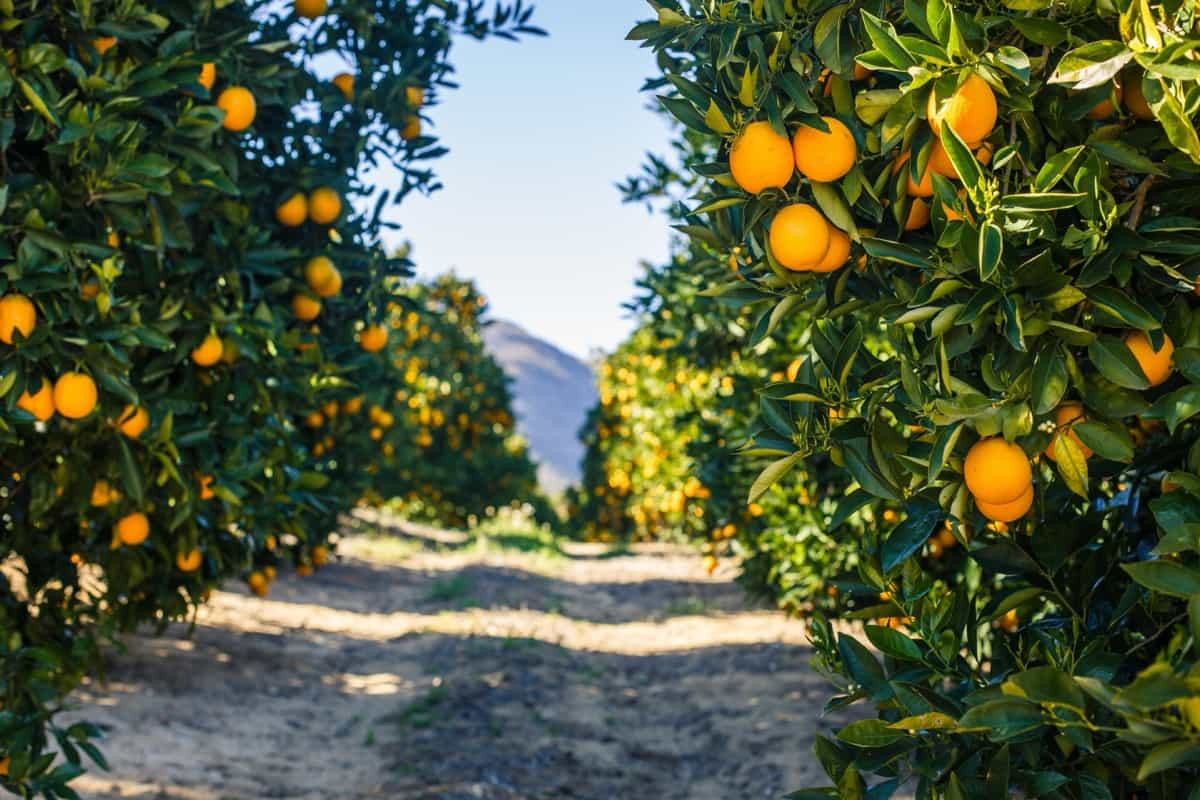
Post-harvest handling techniques in Spain aim to preserve the quality and safety of citrus fruits during storage, transportation, and marketing. These techniques include sorting and grading, washing and drying, waxing and coating, degreening, curing, packing, and cooling. Sorting and grading involve separating fruits based on size, shape, color, weight, defects, and quality standards.
Washing and drying removes dust, dirt, insects, fungi, bacteria, and pesticide residues, while waxing and coating reduce water loss, prevent decay, enhance color, and add shine. Degreening induces color changes from green to yellow or orange, improving the fruit’s visual appeal and marketability.
Curing stores fruits at low temperatures and high humidity for several days to heal wounds or injuries, reduce water loss, prevent decay, and improve flavor. Packing protects fruits from physical damage and contamination during transportation and marketing, while cooling reduces water loss, decay, ripening, senescence, and ethylene production.
Citrus Market and Trade in Spain
Spain is a citrus producer in the European Union (EU) and the sixth largest in the world. Spain produces about 6% of the world’s citrus and accounts for nearly 25% of fresh citrus exports worldwide. Spain produces mainly oranges, mandarins, lemons, and grapefruits, with oranges being the most dominant type.
Spain exports most of its citrus production to other EU countries, especially Germany, France, the United Kingdom, Italy, and the Netherlands. Spain also exports to non-EU countries such as the United States, Canada, China, Japan, and Russia. Spain’s main competitors in the global citrus market are South Africa, Egypt, Turkey, Morocco, and Argentina.
Spain’s citrus market faces challenges like overproduction, low profitability, high production costs, price volatility, market saturation, quality deterioration, consumer dissatisfaction, trade barriers, and climate change. To overcome these issues, Spain is diversifying its production portfolio, improving quality and safety standards, increasing value addition and innovation, expanding domestic and international markets, enhancing competitiveness and sustainability, and strengthening organization and cooperation. This approach aims to improve the industry’s overall competitiveness and sustainability.
Citrus Policy and Regulations in Spain
South Africa is the biggest supplier of citrus fruits to the EU market, but the EU has put new limits on what can be brought into the EU. This is one of the major trade problems. The country that sends the most fruit to the EU market. The new regulations require precooling at origin and cold treatment in transit for citrus fruits to prevent the entry of false codling moth (FCM), a crop pest endemic to Sub-Saharan Africa.
The South African citrus industry has opposed this measure, claiming that it is not based on science and that it causes significant losses and costs. The Spanish citrus industry welcomes the new regulation, which is in line with scientific studies and aims to protect the European citrus industry from FCM. The Spanish Citrus Management Committee (CGC) has urged the European Commission to investigate South Africa’s compliance with the rules and to enforce them without delay.
In case you missed it: Citrus Farming in India: Citrus Fruit Cultivation Cost, Profit, and Production by State
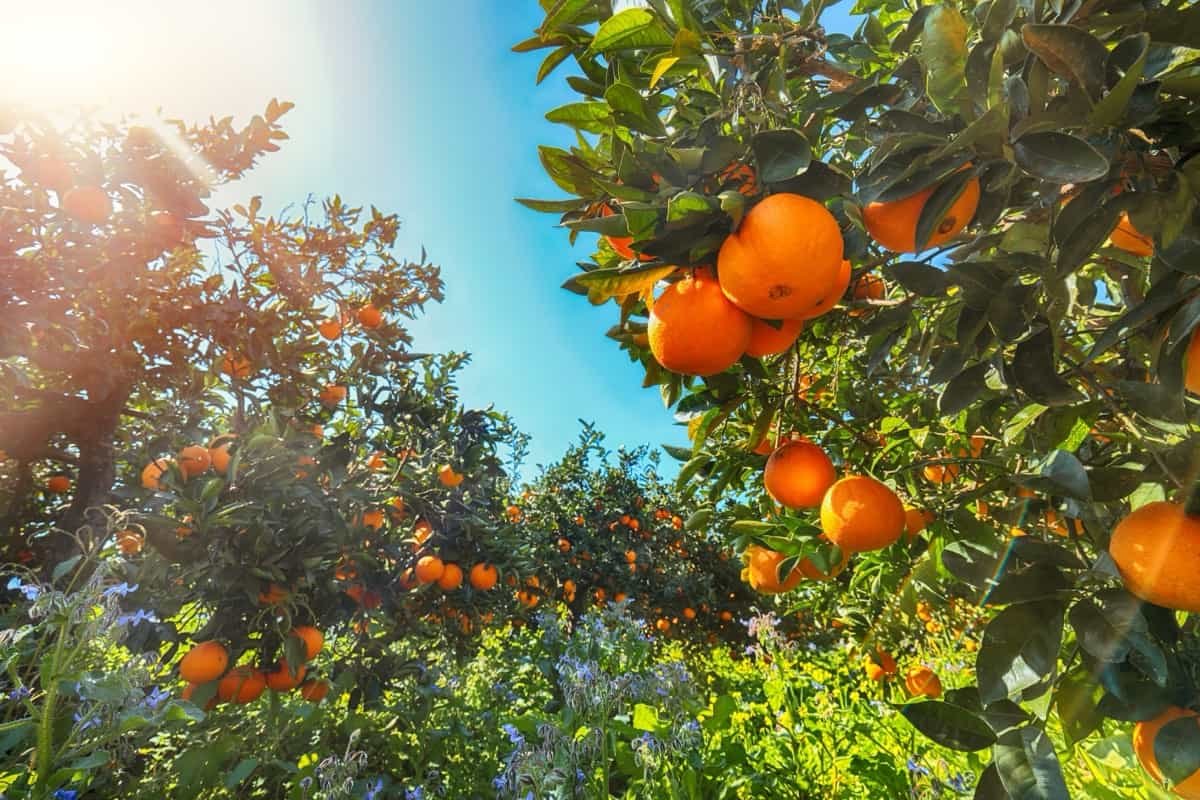
Citrus Genetic Resources and Breeding Programs in Spain
Citrus genetic resources are essential for breeding new varieties with improved traits, such as quality, yield, disease resistance, adaptation to different environments, and consumer preferences. Citrus has a complex genetics and reproductive biology, which makes conventional breeding by hybridization difficult. However, many citrus breeding programs exist worldwide, exploiting both diploidy and polyploidy, as well as mutation breeding.
In Spain, there are several public and private institutions involved in citrus breeding, such as IVIA (Valencian Institute of Agrarian Research), IRTA (Institute of Agrifood Research and Technology), CEBAS-CSIC (Center for Soil Science and Applied Biology of Segura), IFAPA (Andalusian Institute of Agricultural Research and Training), IMIDA (Murcian Institute of Agricultural Research and Development) and Eurosemillas SA.
The main goals of these programs are to find new high-quality mandarin cultivars that are seedless, easy to peel, and of higher quality, as well as new rootstocks that are better at farming and can handle both living and nonliving stresses. One of the best things that has come out of these programs is the creation of triploid mandarins by mating diploid and tetraploid parents and then saving the embryos and using flow cytometry. These mandarins have excellent organoleptic characteristics and are seedless under cross-pollination conditions.
Citrus Water Management and Irrigation Practices in Spain
Water is a scarce and valuable resource in Spain, especially in the Mediterranean region, where most of the citrus production is concentrated. Therefore, efficient water management and irrigation practices are crucial for the sustainability and profitability of the citrus sector. Citrus trees require a relatively high amount of water to maintain their physiological functions and to produce high-quality fruits.
However, water availability and quality vary depending on the location, climate, soil type, and water source. Moreover, water demand also depends on the cultivar, rootstock, planting density, pruning system, crop load, and stage of development. To optimize water use efficiency and productivity, several factors need to be considered, such as irrigation scheduling, irrigation methods, irrigation systems, irrigation equipment, and irrigation management.
In Spain, different irrigation methods are used for citrus cultivation, such as surface irrigation (flood or furrow), sprinkler irrigation (solid set or portable), and drip irrigation (surface or subsurface). Among them, drip irrigation is the most widely used method due to its advantages in terms of water saving, uniformity of application, fertigation possibility, weed control, and reduced salinity problems.
Citrus Nutrient Management in Spain
Citrus nutrient management in Spain involves soil and leaf analysis, fertigation technology, and the integration of organic and inorganic fertilizers. Organic fertilizers like manure, compost, and green manure are widely used in citrus orchards, but they cannot meet the high nutrient demand of citrus trees.
In case you missed it: Thailand All Time Mango Farming: How to Plant and Grow Katimon Mango
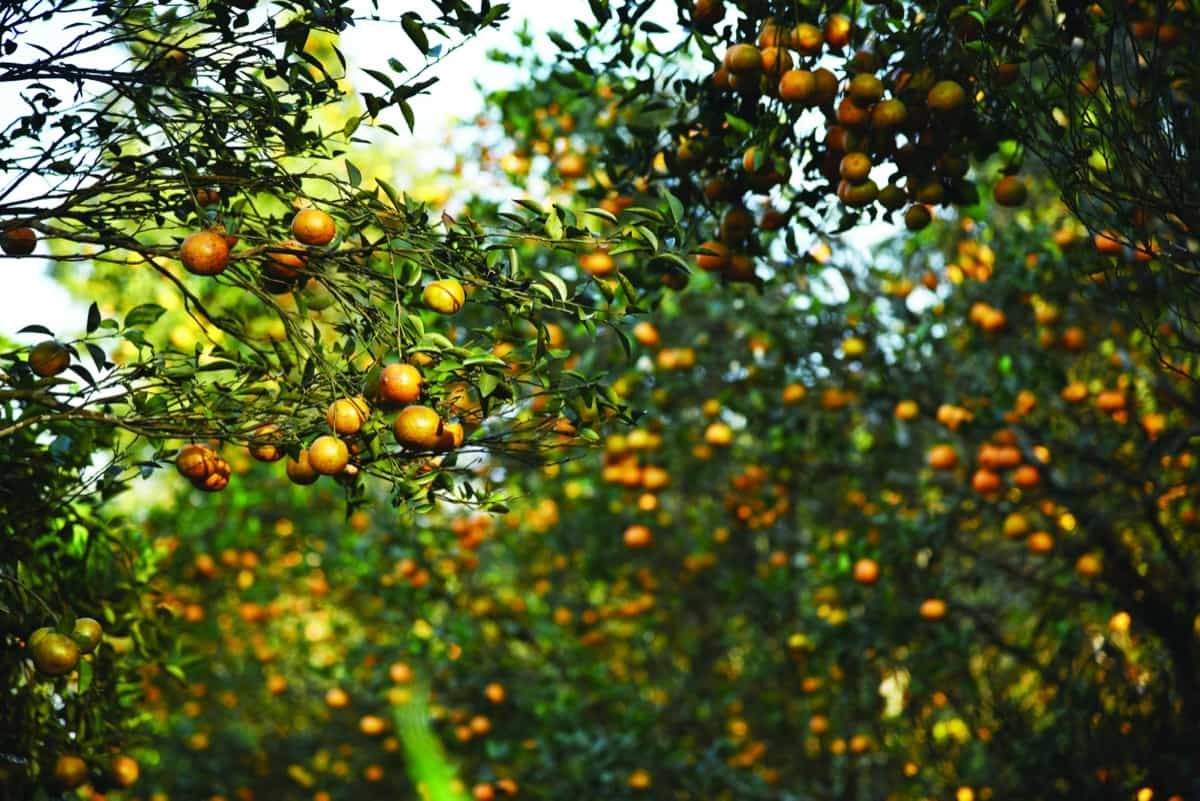
Incorporating inorganic fertilizers, such as urea, ammonium nitrate, potassium nitrate, and potassium sulfate, is based on integrated nutrient management (INM), which optimizes crop yield and quality while minimizing environmental risks. INM practices include applying organic fertilizers during low soil temperatures and microbial activity, inorganic fertilizers during high crop demand and irrigation frequency, and adjusting fertilizer doses based on crop demand and growth stage.
Citrus Fruit Yield Per Hectare
Citrus fruits are among the most important fruit crops in Spain, accounting for about 62% of the total fruit production. Citrus fruits are mainly grown in four regions: Andalusia, Valencia, Murcia, and Catalonia, with Andalusia and Valencia producing nearly 90% of the country’s citrus output. The average yield of citrus fruits per hectare in Spain ranges from 15 to 50 tons, depending on the type of fruit and the region.
Under a dense planting system with 400 trees per hectare, an experienced farmer can expect a yield of 40-50 tons per hectare for oranges. The average yield of citrus fruits per hectare in Spain is 15-25 tons for all types of citrus. The average yield of citrus fruits per hectare in Spain is 20-25 tons for oranges, 15-20 tons for mandarins, 25-30 tons for lemons, and 20-25 tons for grapefruits.
One of the major costs for citrus farmers in Spain is water, especially in areas with low rainfall and high evaporation rates. Several growers indicate that their annual cost for water can be as high as $3,000 per acre (about 7,400 euros per hectare). A study found that using machines to grow oranges could save 186 hours of work per hectare, which would lower the cost by 2,900 to 4,130 euros per hectare. The average cost of organic citrus farming in Spain is about 1.5 times higher than conventional citrus farming, mainly due to higher labor and certification costs.
Profits in Citrus Farming in Spain
Spain is the leading exporter of fresh citrus fruits in the EU and accounts for nearly 25% of fresh citrus exports worldwide. The main destination markets are Germany and France, which receive more than half of Spain’s citrus exports. However, Spain also faces strong competition from non-EU countries such as Morocco, Turkey, and Egypt, which have lower production costs and can offer lower prices. Moreover, Spain has been affected by trade barriers imposed by some countries, such as Russia and China, due to political or sanitary reasons.
The average profit margin for organic citrus farming in Spain was about 20%, compared to 10% for conventional citrus farming. However, these figures may reflect something other than the current situation, as both costs and prices have changed significantly since then. Some growers in Spain have reported profits ranging from $1.50 to $2.00 per box (about 0.30 to 0.40 euros per kg) for oranges sold in Europe.
Citrus Grown Areas
| Region | Area (ha) | Production (tons) | Yield (tons/ha) |
| Andalusia | 87,000 | 1,800,000 | 20.7 |
| Valencia | 140,000 | 3,500,000 | 25 |
| Murcia | 45,000 | 900,000 | 20 |
| Catalonia | 28,000 | 400,000 | 14.3 |
| Total | 300,000 | 6,600,000 | 22 |
In case you missed it: Fertilizers Cost Per Acre: Analysis of Government Subsidies on Fertilizers in India
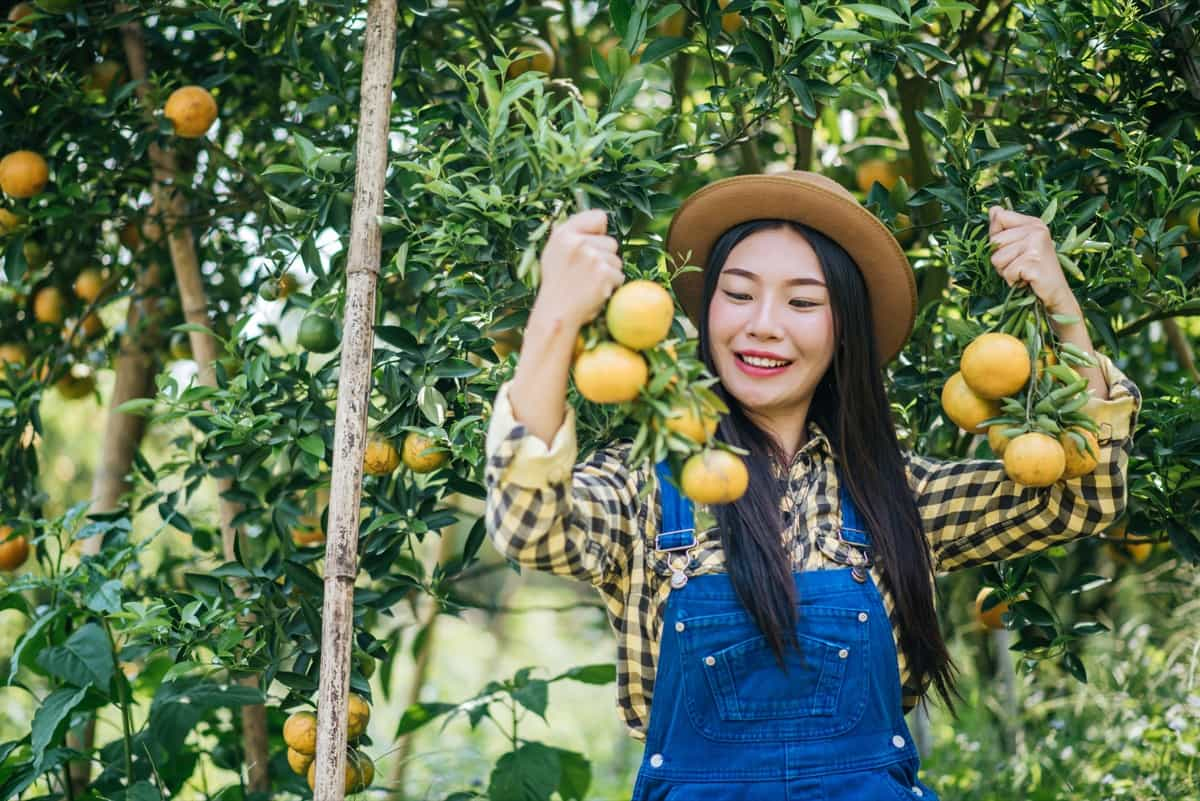
Conclusion
In the sun-drenched fields of Spain, citrus farming emerges as a flourishing venture. With Andalusia, Valencia, Murcia, and Catalonia contributing to a total production of 6.6 million tons across 300,000 hectares, the citrus orchards not only paint picturesque landscapes but also yield a bountiful tapestry of economic prosperity and agricultural prowess.
- Types of Pesticides Used in Agriculture: A Beginner’s Guide
- Economical Aquaculture: A Guide to Low-Budget Fish Farming
- 15 Common Planting Errors That Can Doom Your Fruit Trees
- How to Make Houseplants Bushy: Effective Tips and Ideas
- Innovative Strategies for Boosting Coconut Pollination and Yield
- Pollination Strategies for Maximum Pumpkin Yield
- The Complete Guide to Chicken Fattening: Strategies for Maximum Growth
- Natural Solutions for Tulip Problems: 100% Effective Remedies for Leaf and Bulb-Related Issues
- Revolutionizing Citrus Preservation: Towards a Healthier, Greener Future
- Natural Solutions for Peony Leaf and Flower Problems: 100% Effective Remedies
- Maximizing Profits with Avocado Contract Farming in India: A Comprehensive Guide
- Natural Solutions for Hydrangea Problems: 100% Effective Remedies for Leaf and Flowers
- The Ultimate Guide to Choosing the Perfect Foliage Friend: Bringing Life Indoors
- From Sunlight to Sustainability: 15 Ways to Use Solar Technology in Agriculture
- The Ultimate Guide to Dong Tao Chicken: Exploring from History to Raising
- The Eco-Friendly Makeover: How to Convert Your Unused Swimming Pool into a Fish Pond
- Mastering the Art of Delaware Chicken Farming: Essentials for Healthy Backyard Flocks
- 20 Best Homemade Fertilizers for Money Plant: DIY Recipes and Application Methods
- How to Craft a Comprehensive Free-Range Chicken Farming Business Plan
- Brighten Your Flock: Raising Easter Egger Chickens for Beauty and Bounty
- How to Optimize Your Poultry Egg Farm Business Plan with These Strategies
- Subsidy for Spirulina Cultivation: How Indian Government Schemes Encouraging Spirulina Farmers
- Ultimate Guide to Raising Dominique Chickens: Breeding, Feeding, Egg-Production, and Care
- Mastering the Art of Raising Jersey Giant Chickens: Care, Feeding, and More
- Ultimate Guide to Raising Legbar Chickens: Breeding, Farming Practices, Diet, Egg-Production
- How to Raise Welsummer Chickens: A Comprehensive Guide for Beginners
- How to Protect Indoor Plants in Winter: A Comprehensive Guide
- Ultimate Guide to Grow Bag Gardening: Tips, Tricks, and Planting Ideas for Urban Gardeners
- Guide to Lotus Cultivation: How to Propagate, Plant, Grow, Care, Cost, and Profit
- Agriculture Drone Subsidy Scheme: Government Kisan Subsidy, License, and How to Apply Online
- Ultimate Guide to Raising Araucana Chickens: Breed Profile, Farming Economics, Diet, and Care
- Bringing Hydroponics to Classroom: Importance, Benefits of Learning for School Students
- Ultimate Guide to Raising Polish Chickens: Breed Profile, Farming Economics, Diet, and Care
- Ultimate Guide to Raising Australorp Chickens: Profile, Farming Economics, Egg Production, Diet, and Care
- Silkie Chicken Farming: Raising Practices, Varieties, Egg Production, Diet, and Care
- Sussex Chicken Farming: Raising Practices, Varieties, Egg Production, Diet and Care